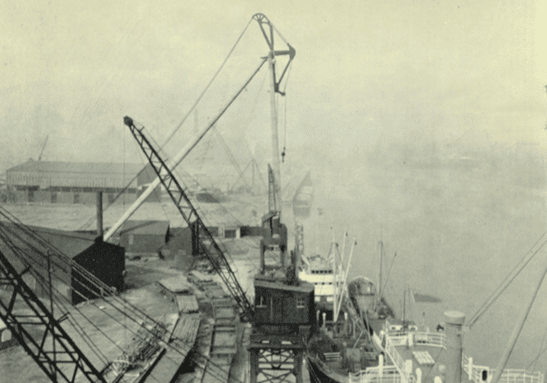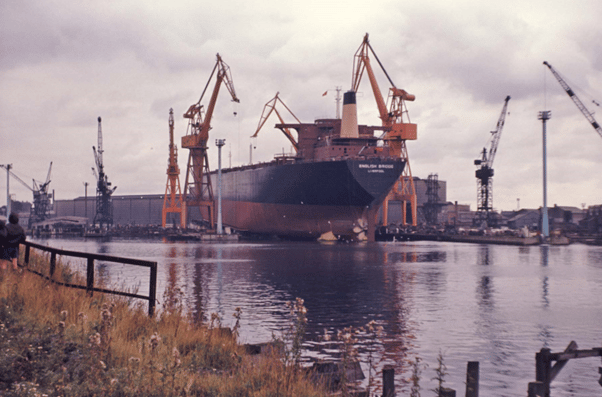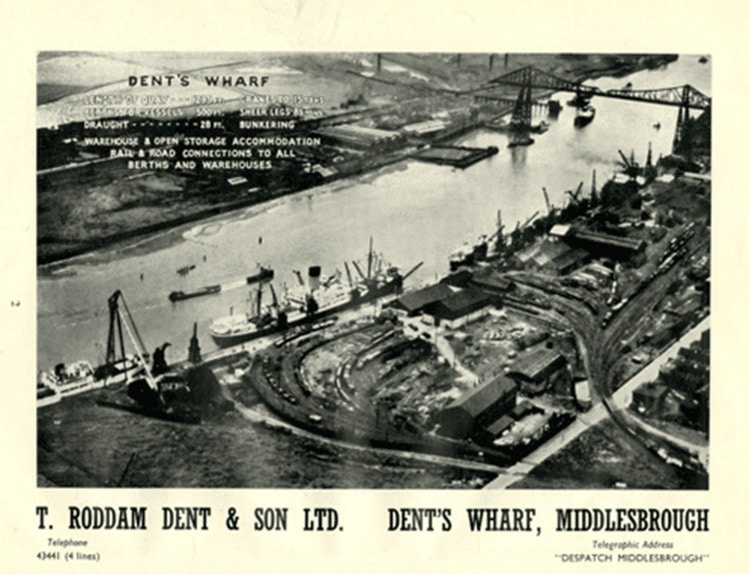One of the many changes occurring during the post-war era was the closure and contraction of many of the heavy industries along the south bank of the Tees at Middlesbrough as manufacturing – particularly of iron and steel – shifted downstream. Despite this, private sector investment and expansion continued at the port facilities in Middlesbrough.



Industry was gravitating towards South Bank, Grangetown and Redcar where there was more space for expansion and growth. Smith’s Dock Company was one such example, where shipbuilding, ship-repairing and marine engineering facilities at South Bank stretched to 70 acres, and included four shipbuilding berths for the construction of vessels up to 25,000 tonnes deadweight and four dry docks.
With ships getting larger, the depth of the channel leading to Middlesbrough Dock was now starting to restrict operations. With heavy industry already moving downstream it seemed a logical decision to establish a new dock further down river to serve these growing industries. The port authority officially opened a new facility ‘Tees Dock’ in Redcar on 4 October 1963. Operations were starkly different to today, there were just two cranes and a warehouse, as well as an office block and maintenance department for the workforce of around 25 people. (Source: PD Tees Dock 50th Anniversary publication)
The Dent family also continued to expand its operations on the Tees. In June 1947, the neighbouring wharf upriver from Dent’s Wharf was purchased from Messrs Richardson, Westgarth & Co. Ltd to provide a fifth berth. The sale included large dock cranes, known as Sheerlegs (with 80 tonne lifting capacity), and a 15 tonne steam crane. The Dent’s undertook significant work on this quay, including sheet piling and new crane tracks, which enabled the cranes to run from No.3/4 Berths to No.5 Berth. The whole of the wharf was also strengthened and dredged.
This last acquisition for the Dent family brought its total river frontage up to 1,300 feet. To support the increasing volume of traffic, new rail sidings were laid, providing approximately four miles of rail track on site. All rail shunting on the site and the movement of wagons to and from the exchange sidings was carried out by the company’s six locomotives.

In 1973 AV Dawson made the most significant move in its history, relocating to the riverside and acquiring Dent’s Wharf’s six-acre site, which it later renamed as Dawson’s Wharf.
Following AV Dawson’s purchase of the wharf, the port authority brought a barge and crane down to the site to lift the Sheerlegs off the quay and take them down to Tees Dock to use there. AV Dawson never actually used these cranes. The first cranes AV Dawson used on its site were a Pennine crawler crane and a six-wheeler mobile crane which were used in 1973 for storing steel beams. Both cranes were first driven by Jonathan Harland, one of AV Dawson’s first and longest serving employees. Neither of these cranes were suitable for working vessels though and consequently AV Dawson acquired an eight-wheeler mobile crane and an RB61 crane for vessel related operations, which started in the mid-1980s when AV Dawson secured a licence to operate the Middlesbrough Wharf.
Did you know?
Former employee, Jonathan Harland, retired in 2021, but was with the company from the early days at Dawson’s Wharf. He can still recall how dramatic it was when a large vessel was launched from Haverton Hill slipways. He said: “I can remember the surge of water that was generated when a large vessel was launched – it actually made the water come over the quay at Port of Middlesbrough!”